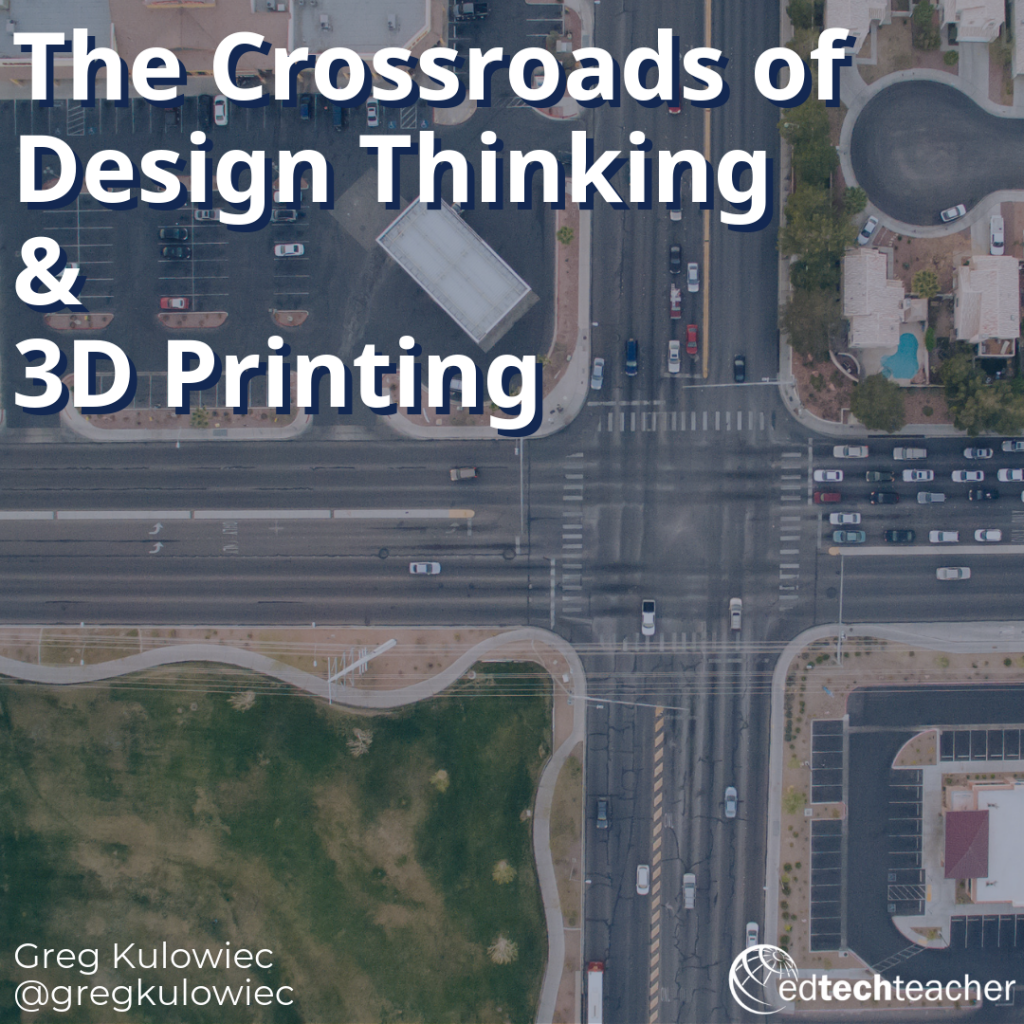
Why Design Thinking?
How Might We Create meaningful learning environments for students? This is a huge question to tackle and one with countless reasonable answers. Whether classrooms embrace Project Based Learning, Inquiry Based Instruction, Personalized Learning, or another other framework for a classroom experience, the intention tends to be universal. Educators want to create the most meaningful environment that allows for students to explore new ideas, learn essential skills and content, and demonstrate their understanding. Add into that equation student collaboration, creativity, and connections to real world problems, and we have a steep mountain to climb. Design Thinking has emerged as a meaningful framework that can be used in classrooms with students to create an environment that has the potential to address all of the above mentioned big picture goals. What is also fascinating about leveraging this model is that while there are countless models of classroom instruction, Design Thinking is one model that allows and expects students to identify the problem or opportunity they would like to address.
What is Design Thinking?
Design Thinking is more than a structured process to solve a problem. It is a framework that emphasizes the ability to identify a problem or opportunity that can help someone else, such as a community or a group. This is the step -the work that is put in before solving the problem- that makes the model so valuable for student use. Further, the process and approach used in Design Thinking is one where the person or group that is engaged in the process is doing the work on behalf of another group. The idea that students can bring value to another community has the potential to increase the value of the work from the student perspective. The impact of their work in this sense is for someone else, not for the purpose of completing an assignment.
The most common model used for Design Thinking is the Stanford d.School model that clearly outlines each phase in the Design Thinking process. What is interesting about this framework is that while it appears to be linear in nature, the work of Design Thinking is often cyclical and requires those engaged in the process to revisit earlier stages in order to clearly define their opportunity and create their design solution. What is fascinating about the Design Thinking process is that once one develops a comfort level and awareness, engaging in Design Thinking becomes less about the structured process and more about a mindset or mindsets associated with the process. For a quick insight into this transformation from process to mindset, check out the post from the Ideo U blog where David Kelley outlines the eight design abilities of creative problem solvers.

Design Thinking & 3D Printing
The connection to Design Thinking and 3D Printing is significant. As schools have increasingly made 3D printers available to students, a framework to guide meaningful use of the tool is an important consideration. Why are students using 3D printers? Are they all creating the same product or “bird house”? Are they allowed to tinker & play with the 3D printer? Or, are they engaged in a meaningful process to bring value to another person or group? Are they engaged in a process to identify an opportunity to solve a problem for someone and bring their solution to life with a 3D printer? These sorts of questions fascinate me, and I find that Design Thinking has the potential to create a meaningful experience in a school environment where students have access to 3D printing technology. What is also important to recognize about the Design Thinking process is that, while the fourth stage of prototyping is typically associated with a physical process and hence the connection to 3D printing, prototyping is not solely the creation of a physical product. Once can prototype a process, a story, an experience, and of course a product. My hope is that by pairing process and framework with the technology, classrooms with access to 3D printers can truly unlock their full potential. Creating with intention to understand the experience of someone else is powerful work and one that allows students to engage with work that is inherently valuable.

If Design Thinking & 3D Printing sound like they could be a valuable additional to your classroom, consider joining EdTechTeacher this summer in a Design Thinking workshop in Boston, Massachusetts & San Francisco! Learn more at edtechteacher.org/summer


